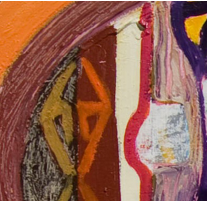Symbolic boundaries. An approach to the discussions about the regulated processes of otherness construction

Published 2019-06-29
How to Cite
Abstract
In this paper, the symbolic boundary will be discussed as an analytical category, agreeing with Rizo and Romeu (2006) that it gives the possibility of approaching the understanding of the logics and dynamics involved in the development of what we consider our own and otherness. Assuming, with greater or lesser consensus, that it is a theoretical-methodological tool which allows the understanding of the particularities that these dissimilar subjective constructions acquire in the encounter, either in terms of negotiation or - in all probability - ratifying limits dependent on the difference. Therefore, it is necessary to consider identity as a category in which the main debates will be ground and which appears as essential to achieve a comprehensive understanding of this polysemic and aporetic concept always imbricated in the approach to symbolic boundaries.
Downloads
References
Briones, C. (2005). Formaciones de alteridad: contextos globales, procesos nacionales y provinciales. En Cartografías argentinas. Políticas indigenistas y formaciones provinciales de alteridad (pp. 9-38) Buenos Aires: Antropofagia.
Briones, C. (2007). Teorías performativas de la identidad y performatividad de las teorías. EnTabula rasa. N° 6. 55-83.
Briones, C., y Siffredi, A. (1989). Discusión introductoria sobre los límites teóricos de lo étnico.En Cuadernos de Antropología. N° 3. 5-24.
Brubaker, R., y Cooper, F. (2005). Más allá de la identidad. En Apuntes de Investigación. N°7. CECyP. 178-208.
Caggiano, S. (2003). Fronteras múltiples: reconfiguración de ejes identitarios en migraciones contemporáneas a la Argentina. En Cuadernos del IDES. N° 1. 3-24.
Clifford, J. (1999). Itinerarios Transculturales. El viaje y la traducción a fines del siglo XX.Barcelona: Gedisa.
Ferrer-Gallardo, X. (2008). The Spanish–Moroccan border complex: Processes of geopolitical, functional and symbolic rebordering. En Political Geography. N° 3. 301-321.
Grimson, A. (2011). Los límites de la cultura: crítica de las teorías de la identidad. Buenos Aires: Siglo Veintiuno.
Firpo, M. E., y Ribero, G. (2017). Imperativos de la profesión. La identidad como demanda de profesionales de la agronomía. En Revista Uruguaya de Antropología y Etnografía. N° 1. 87-99.
Hall, S. (2003). Introducción: ¿Quién necesita identidad?. En Hall, S. y Du Gay, P. Cuestiones de identidad cultural (pp. 13-39) Buenos Aires: Amorrortu.
Kauffer Michel, E. F. (2005). De la frontera política a las fronteras étnicas: refugiados guatemaltecos en México. En Frontera Norte. N° 34. 07-36.
Navarrete-Cazales, Z. (2015). ¿Otra vez la identidad?: Un concepto necesario pero imposible. En Revista mexicana de investigación educativa. N° 65. 461-479.
Paniagua Arguedas, L. (2006). La palabra como frontera simbólica. En Revista de Ciencias Sociales. N° 111-112. 143-154.
Rizo García, M., & Romeu Aldaya, V. (2006). Hacia una propuesta teórica para el análisis de las fronteras simbólicas en situaciones de comunicación intercultural. En Estudios sobre
las culturas contemporáneas. N° 24. 35-54.
Trejo, Z. (2015) Fronteras simbólicas e imaginarios sociales. Recuperado de: https://www. researchgate.net/profile/Zulema_Trejo/publication/274960855_Fronteras_simbolicas_e_
imaginarios_sociales/links/552d83e50cf29b22c9c4f66c/Fronteras-simbolicas-e-imaginarios-sociales.pdf





